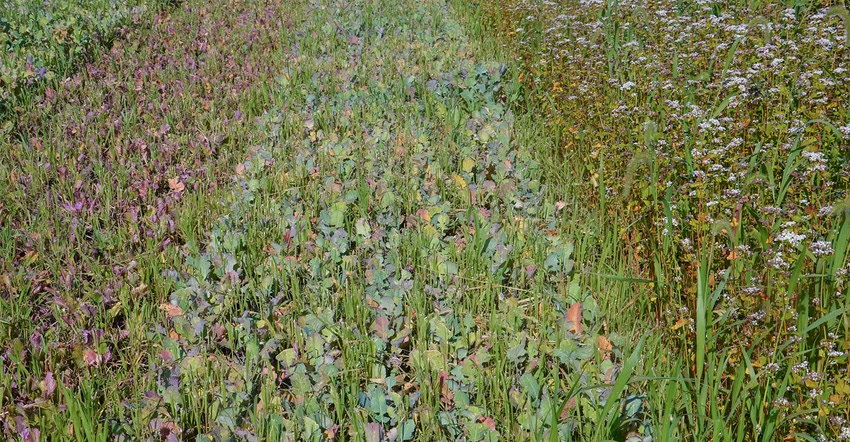
There were 1.1 million acres of cover crops grown in Indiana last year. The vast majority were planted behind corn and soybeans or after a small-grain harvest. However, conservation staffers report that some specialty crop growers are now looking at cover crops, as well.
Information about this topic was provided by Indiana Conservation Partnership personnel, led by the Natural Resources Conservation Service, including Don Donovan, Brian Musser and Clint Harrison, district conservationists; Susannah Hinds, grazing specialist; Scot Haley, resource soil scientist; Kris Vance, public affairs specialist; Victor Shelton, state agronomist/grazing specialist; Tony Bailey, state conservation agronomist; and Shannon Zezula, state resource conservationist.
Cover crops expand
Cover crop use is skyrocketing in Indiana corn and soybean rotations, but there’s also increasing use of cover crops in Indiana’s specialty crops, Donovan says. Because cover crops provide weed control, erosion control, organic matter, nutrient scavenging and other benefits, they have a place in specialty crop production.
Donovan says many of the specialty crops raised in Indiana are high-nitrogen, low-carbon plants. In other words, once they mature and start to decay, they do so very fast and leave very little residue on the surface to build organic matter and to protect the soil over the winter. Seeding a high-carbon cover crop such as cereal rye right after harvest will help protect the soil surface over winter, and balance the carbon-to-nitrogen ratio in the soil. High-carbon cover crops also help build soil organic matter in specialty crop production.
New uses
Some producers who raise pumpkins are using cover crops and no-till just as they do with corn and soybeans. By no-tilling pumpkins into cereal rye terminated with a roller crimper, the soil is protected from heavy rainfall events throughout the summer. The cereal rye mat keeps the pumpkins off the soil, producing a cleaner fruit that’s more appealing to the customer.
Some specialty crops are heavy users of nitrogen. Pumpkins use up to 150 nitrogen units per acre for an average crop yield. Cereal rye can scavenge available nitrogen that may otherwise be lost over winter from the past crop, and then slowly make it available to next year’s crop over the summer.
Donovan also says farmers who use no-till with cover crops find their soil structure improves. This enables harvesting equipment to stay on top of the soil and keeps rutting in wet soil conditions to a minimum.
Disease concerns
Fungal concerns are a major issue in the production of many specialty crops, and Donovan knows some producers who believe brassicas, such as rapeseed, may be acting as a natural soil biofumigant. Mixing these with cereal rye may provide further natural reduction in fungal issues.
As with all crops, pests and diseases should be monitored frequently. Act upon them as soon as possible when the need arises, Donovan notes.
Cover crops provide many diverse benefits in any kind of cropping system, including Indiana’s specialty crops. The best way to determine if cover crops will help your farm is to try some small strip trials and see what happens when you include cover crops in your production system, Donovan concludes.
About the Author(s)
You May Also Like




